Introduction: In this article, Melissa Davenport Berry writes about Thomas Tupper, a missionary to the Mashpee Wampanoag Tribe in the Plymouth Colony. Melissa is a genealogist who has a website, americana-archives.com, and a Facebook group, New England Family Genealogy and History.
Today I continue with my accounts of two important historical figures in the early settlement of Plymouth Colony: Richard Bourne and Thomas Tupper, missionaries devoted to the Native American Indians.
To recap: My last story covered Richard Bourne, aka “the White Sachem” or “Little Father,” a missionary who helped secure the Mashpee (originally called Marshpee) Wampanoag Tribe’s reservation land and a meeting house for the Indians. (Read more: Part 1.)
Today I cover Thomas Tupper, who was also instrumental in securing peace with the Native Americans and erecting the first meeting house.
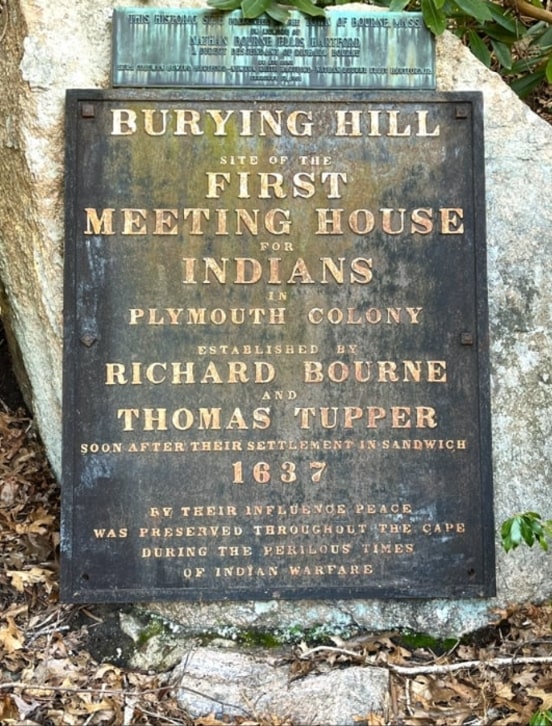
This marker reads:
Burying Hill, site of the first meeting house for Indians in Plymouth Colony, established by Richard Bourne and Thomas Tupper soon after their settlement in Sandwich, 1637. By their influence, peace was preserved throughout the Cape during the perilous times of Indian warfare.
Thomas Tupper came to America and settled in the town of Saugus, which was a part of Massachusetts Bay Colony – but soon after he, along with nine others (they are known as the “Ten Men from Saugus,”) removed to Plymouth Colony to establish the town of Sandwich.
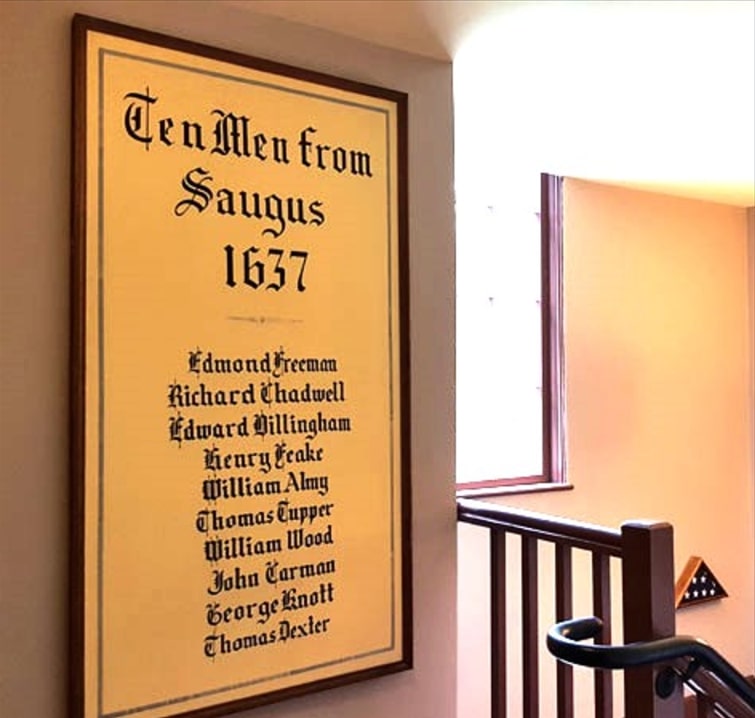
Here is a newsclip that cites the Plymouth record of the Sandwich establishment by the “Ten Men from Saugus.”
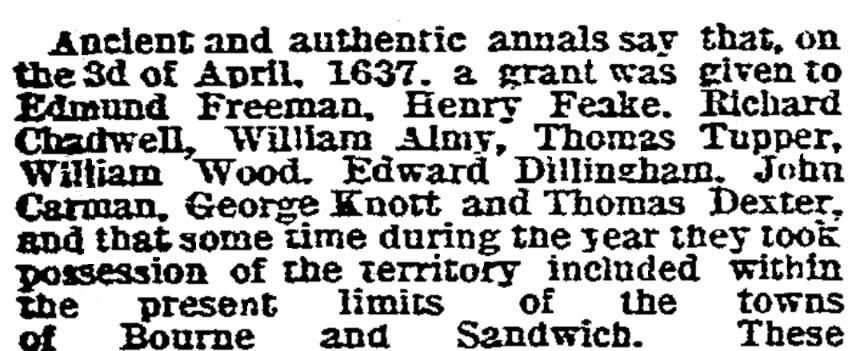
This article reports:
Ancient and authentic annals say that, on the 3d of April, 1637, a grant was given to Edmund Freeman, Henry Feake, Richard Chadwell, William Almy, Thomas Tupper, William Wood, Edward Dillingham, John Carman, George Knott, and Thomas Dexter, and that some time during the year they took possession of the territory included within the presents limits of the towns of Bourne and Sandwich.
And more from the record states they:
…shall have liberty to view a place to sit down and have sufficient lands for threescore families, upon the conditions propounded to them by the governor and Mr. Winslow.
Thomas Tupper’s son, Captain Thomas Tupper Jr., also was a missionary and preached to the “Praying Indians” in and around Herring Pond.
This was the Wampanoag Tribe of Plymouth Indians known today as the Herring Pond Wampanoag Tribe, also identified in historical documents as Patuxet, Comassakumkanit, the Herring Pond Indians, the Pondville Indians, and Manomet.
Here is a photo of a gathering at Herring Pond Indian Church in Cedarville for one of the first pow-wows held in Massachusetts. This church is still up and running and an Indian meeting there is held once a month.
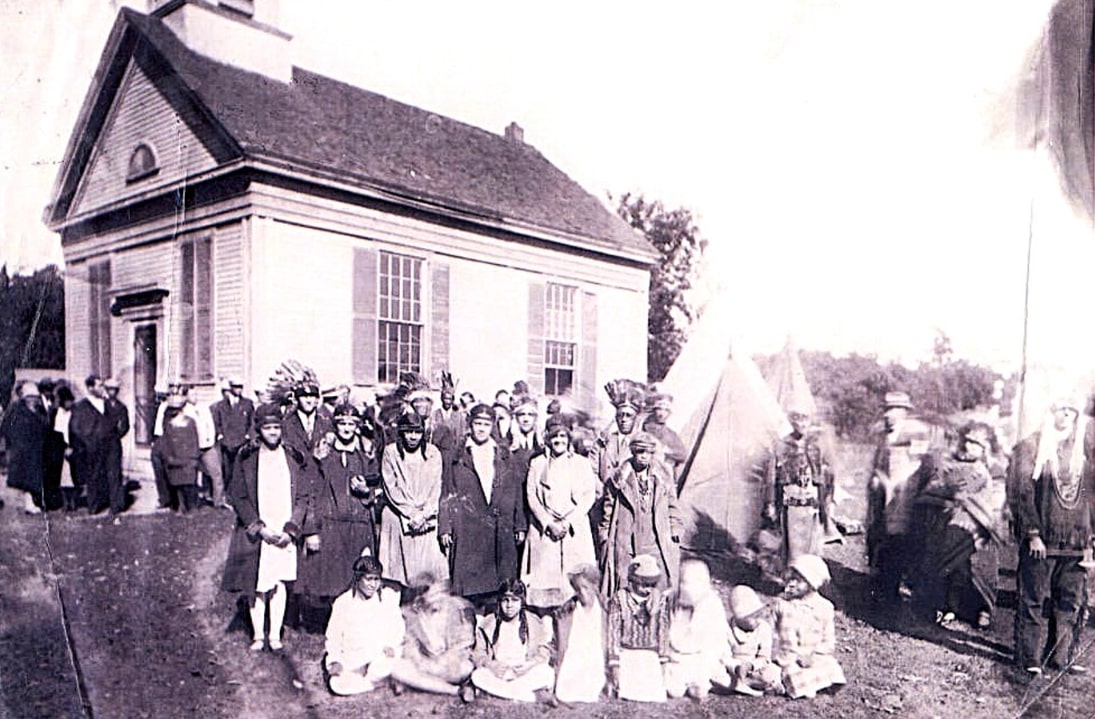
An article from the American Apollo dated 1792 references Thomas Tupper Jr. by citing the writings of Mathew Mayhew, son of Rev. Thomas Mayhew and grandson of Gov. Thomas Mayhew. Thomas Jr. married Martha Mayhew, daughter of the governor, and left descendants.

According to this report Thomas Tupper was among the men who preached to the Indian population in the Eastham area. Others mentioned are Mr. Treat, Mr. Rowland Cotton, and Mr. John Cotton.
Thomas Jr. created a list of his congregation: “1693 List of ‘Praying Indians’ in Herring Pond Congregation.”
In 1939 the Tupper Family Association of America gathered to unveil a special monument to commemorate their progenitor ancestor Thomas Tupper and his wife Anne. The monument is located in Sandwich, Barnstable County, Massachusetts. This helped celebrate the tercentenary anniversary of the Tupper clan in America.
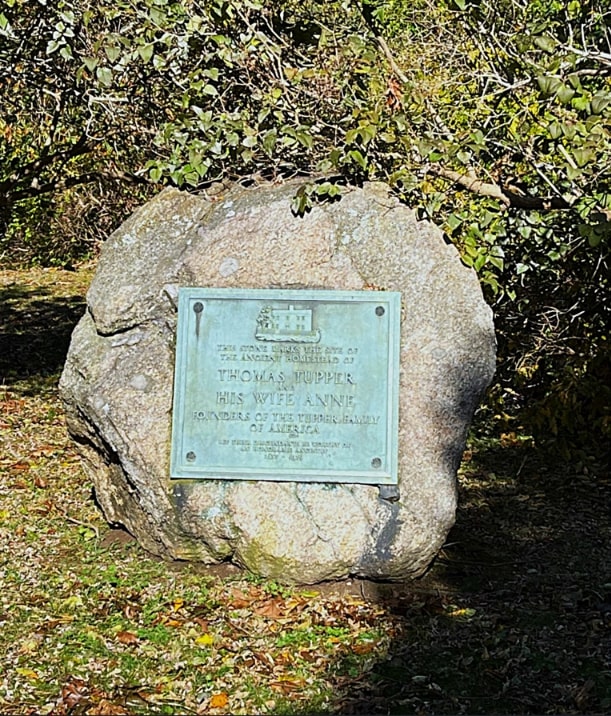
The marker reads:
This stone marks the site of the ancient homestead of Thomas Tupper and his wife Anne, founders of the Tupper family of America. Let their descendants be worthy of an honorable ancestry, 1637-1939.
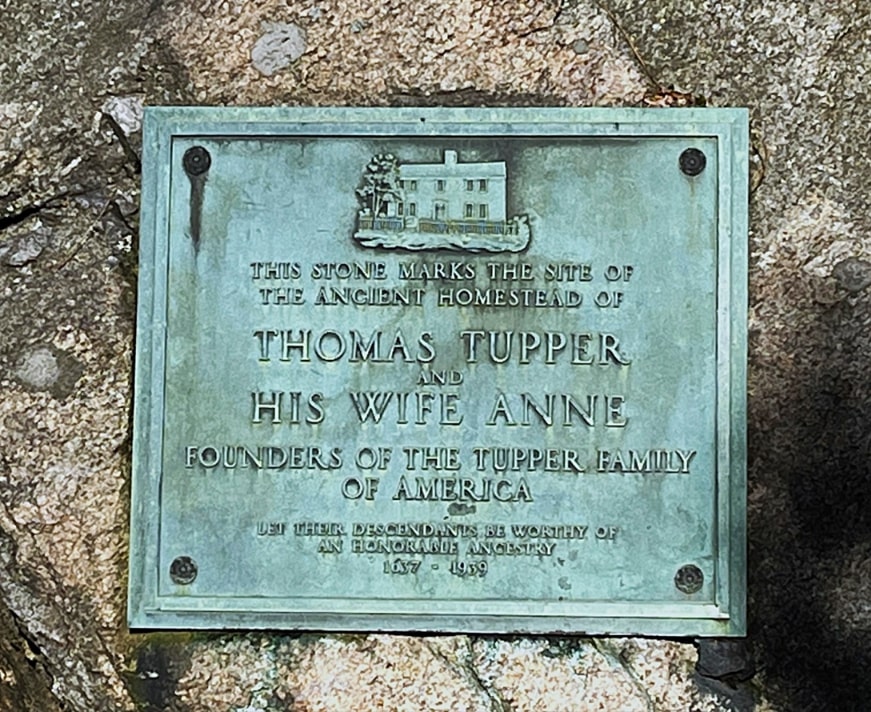
Here is a newsclip announcing the event just days before the monument was unveiled.
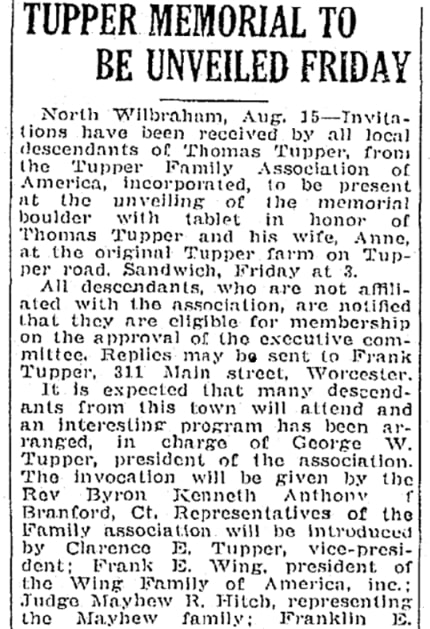
This article reports:
Invitations have been received by all local descendants of Thomas Tupper, from the Tupper Family Association of America, incorporated, to be present at the unveiling of the memorial boulder with tablet in honor of Thomas Tupper and his wife, Anne, at the original Tupper farm on Tupper Road, Sandwich, Friday at 3.
To be continued…
Explore over 330 years of newspapers and historical records in GenealogyBank. Discover your family story! Start a 7-Day Free Trial
Note on the header image: Oakes Agnus Coombs Jr. and his wife Amanda Pocknett, daughter of Nathan Pocknett and Eleanor Hicks. She was the widow of Thomas William Gardner. These photos were featured in the 125th Anniversary of Mashpee Celebration 1995. Credit: Town of Mashpee, Massachusetts, Archives.
Related Articles:
- Mayflower Descendants: Who’s Who, Part 35 (part 9)
- Mayflower Descendants: Who’s Who, Part 35 (part 10)
- Mayflower Descendants: Who’s Who, Part 35 (part 11)
- Mayflower Descendants: Who’s Who, Part 35 (part 12)
- Mayflower Descendants & the Mashpee Wampanoag Tribe (part 1)
- Mayflower Descendants & the Mashpee Wampanoag Tribe (part 2)
- Mayflower Descendants & the Mashpee Wampanoag Tribe (part 3)
- Richard Bourne: Missionary to Plymouth Colony Indians
